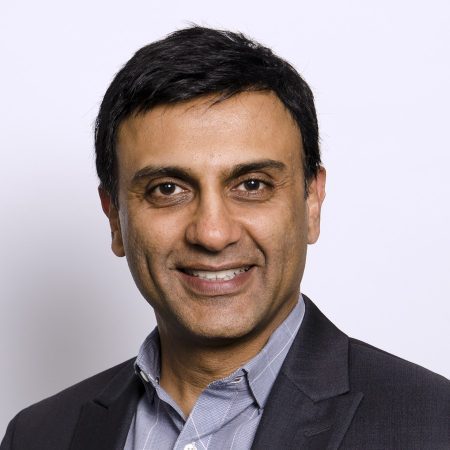EY: Neurodiversity is good for business
Here’s how to create a workplace where everyone can thrive.
Why You Should Care
Diversity is not just the right thing to do, it is the smart thing.
EY is highly aware of this. And it has started looking specifically at hiring neurodiverse employees, as well as creating an inclusive environment that allows them to thrive.
Here's how (and why) to follow the consultancy giant's lead around neurodiversity.
HR leaders, don’t miss out: Join us in Las Vegas for free as a VIP guest at UNLEASH America.
When talking about diversity, equity and inclusion, the main groups that many employers look at are gender, race, sexual orientation and disability.
But one additional element of diversity that is often overlooked is neurodiversity. This despite the fact that up to 20% of the world’s population is neurodivergent, which according to Harvard Health, simply means that these individuals interact with the world in different ways, often because of conditions like autism, ADHD or learning disabilities.
These individuals often face unique challenges and stigma in the workplace. In fact, new research by Birkbeck University and charity Neurodiversity in Business found that 65% of neurodiverse employees fear discrimination at work, while the same proportion of employers noted that managers are not sufficiently equipped to support these workers.
This stigma and lack of support at work means that neurodiverse people face high levels of unemployment and under-employment. Across the community, unemployment is estimated to be up to 40% – this rises to 85% for autistic adults.
However, neurodivergence brings real benefits to businesses. Employers surveyed by Neurodiversity in Business said that neurodiverse workers are hyper focused (80%), think innovatively (75%) and are very creative (78%).
And J P Morgan found that autistic employees worked 48% faster and were almost 100% more productive than their non-autistic colleagues.
EY’s light bulb moment around neurodiversity
Consultancy giant Ernst & Young (EY) has long seen diversity as good for business – and has always talked about accessibility as a core fourth element to diversity, equity and inclusion.
Then in 2015, EY’s Hiren Shukla shares with UNLEASH that the organization had an ‘aha’ moment. EY realized that neurodiversity could be a real business opportunity to drive “innovation, transformation and value creation”; “we don’t want to compete for the same talent” with competitors.
“It was as if a giant light bulb went off in my head”. Neurodiversity could be the answer to questions about “where is new talent going to come from? How are we going to challenge ourselves in new products, in new processes? How do we create value?” and, finally, how do to build a more agile and resilient organization.
As a result, EY under Shulka’s leadership, created a center of excellence (CoE) around cognitive divergence and neurodiversity. Shukla’s official job title at EY is neuro-diverse CoE leader.
The ultimate aim of EY’s neurodiverse CoE is to successfully tap into the rich, but often overlooked, talent pool of neurodiverse workers.
“It is a divergence in social thinking and communication style that is often what leads to challenges” and can prevent neurodiverse employees “sometimes getting in the front door and performing well in the interview”, adds Shukla.
“If the employer or the workplace is not accommodating to these differences, if we are not adjusting to them, then we are virtually screening this amazing talent out” – a lose lose situation.
Inside EY’s neuro-diverse CoE model
In building the neuro-diverse CoE, EY realized there was no playbook on tapping into this overlooked talent pool.
“While we didn’t know what the journey would be, we realized it is our aspiration to get better, and that means we’re going to learn on that journey”, adds Shukla.
“We were building a brand new capability [which] is going to require a cross section of EY – our talent organization, our D,E&I organization and all of our business group units”, as well as with external partners like government agencies and non-profits.
The partnership specifically with business groups in EY was essential to Shukla and his team because they deliberately did not want the neurodiverse CoE “to be a corporate social responsibility play”.
EY is already doing a lot of work in that area, but, instead, “we wanted the neuro-diverse CoE to drive business output and results. We knew this was the only way it would be sustainable and scalable”.
Pulling people from different parts of EY meant a range of skills and competencies were contributing to the goal of the CoE, and it ensured that there was consistency in hiring and retaining neurodiverse employees.

Hiren Shukla, neuro-diverse centre of excellence leader, EY.
“As we studied other organizations, we realized that if you hire one, two, three or four neurodivergent individuals, and you dropped them into different plans, you’re not building the organizational muscle on how to do this,” adds Shukla.
“We saw this as a change management journey, and we are reframing how you traditionally think” about disability and accessibility.
“We are changing the story to one of strengths” based on “the notion that differences make us better as an organization”, both as teams, but also from a product and process perspective.
Building an inclusive workplace at EY
Ultimately, EY’s approach meant the CoE “became effectively another front door entry into EY; we just created another avenue for talent”.
To do this, Shukla’s team had to rethink the job application and assessment process. “We codified an alternative to the traditional behavior-based interview to focus on a performance-based one centered around assessing acumen, aptitude and interest”.
There have been multiple iterations, but the CoE does all the sourcing and hiring itself. It also asks team members who have been hired through the CoE to “voice their concerns and to give us their ideas” about how things can be improved.
But bringing in neurodiverse employees isn’t all the CoE does; it also ensures that EY is somewhere neurodiverse individuals can thrive, and provides support to these employees during their time at the company.
Transparency is key; “our team members don’t have to pretend to be like everybody else. That term ‘masking’ is highly stressful, it dampens motivation. When you remove that barriers, you unlock the door to innovation”, notes Shukla. “It’s almost a no-brainer, and we are very deliberate in creating this type of environment”.
The question is how does EY drive psychological safety for neurodivergent employees?
First, the employees hired through the CoE (of which there are 450 to date) are all given access to specific neurodiversity job coaches. “These are individuals who have this special background [and] training to help our neurodivergent team members develop strategies”, in areas like time management and communication.
This is in addition to the managers that EY have brought into the CoE – they work in the business functions of EY, but have special training around neurodiversity. They are “that first point of building psychological safety” for neurodivergent employees, and help them navigate their roles and the maze of EY as an organization.
Shukla is very proud that many of the team members hired through the CoE “are now at manager level”, and his team has “now hired directly and openly neurodivergent managers” who can also support on the CoE and its infrastructure.
Global successes of EY’s CoE to date
EY started this work (and launched the first CoE in 2015) in the US – mainly because Shukla was leading the move, and his remit was the US.
Now eight years after the launch Shukla tells UNLEASH, “I am happy to say we don’t need a CoE model anymore”. Now, the neurodiversity model has been integrated into EY US’ existing HR and business structures, so there is no need for a ring-fenced CoE.
Due to the success in the US, EY has also been launching neuro-diverse CoEs elsewhere in the world. Ultimately, there is a business need for innovation, transformation and value, which is what prompted the original US CoE, everywhere.
Now that the neuro-diverse CoE model is global – it is in 19 locations in eight countries currently, with more planned in the near future – EY has been able to clearly see the impact Shukla’s work is having on the wider workforce.
“In EY offices where we have our neuro-diverse CoEs, we see employment engagement scores go up. We see a heightened sense of belonging”, shares Shukla. In addition, EY has seen employees start to come forward and self-identify as neurodivergent – and now the employer has a community of 2,000 neurodivergent staff, from the CoE and beyond.
Shukla concludes that “at EY our purpose is to build a better working world”, but “we realized it’s not just for EY”. A central part of the neuro-diverse CoE’s work has been to support EY clients to think more about neurodiversity, and maybe even launch a similar model within their own organizations, in order to reap the financial rewards.
This is not an easy piece of work; it may take six to 12 months to get something off the ground, “but when you do, you will start seeing value in a way that you’ve never seen”.
The International Festival of HR is back! Discover amazing speakers at UNLEASH America on 26-27 April 2023.

Senior Journalist
Allie is an experienced business journalist. She is UNLEASH's talent and recruitment lead.